
Transcription
PAROLE ISSUES
1. YOU HAVE NOT SERVED SUFFICIENT TIME FOR PUNISHMENT.
The Wisconsin parole board gives out 12, 24, 36 and 48 month defers. Thus is the equivalent of sentencing the parole seeker to 1 to 4 additional years in prison even though the parole board isn't even a judge.
The common statement used by the parole board to deny parole is: "You have not served sufficient time for punishment." However the board has not, nor has anyone, documented what is "sufficient time for punishment." Thus what is sufficient time served for punishment?
Wisconsin law sets parole dates for prisoners after they have served 25% of their sentence and when sentenced by the judge, the judge had this in mind. Hence, if 25% of a sentence makes the prisoner eligible for release, thus 25% must be sufficient time for punishment. However, the parole board has been allowed and permitted to act as de facto court of law, de facto jury, de facto prosecutor and de facto sentencing judge, in the parole boards reconvicting and sentencing a prisoner to 1 to 4 additional years and denying parole, with the statement that: "You have not served sufficient time for punishment." Under Wisconsin law, that statement would be true only if the prisoner petitioned to see the parole board before completing 25% of his or her sentence. Thus 25% is sufficient time to serve for punishment under Wisconsin law.
The facts remain that the parole commissioner and parole board does not belong to the Wisconsin Bar Association of the state of Wisconsin, thus has not been licensed by the state of Wisconsin to act in the capacity of a prosecutor, jury, judge and court of law to make a determination that after a prisoner under old or new law, has served 25% of their sentence, the prisoner has not served sufficient time for punishment and reconvict and sentence the prisoner to 1 to 4 additional years. When the judge sentenced the prisoner, the judge had the 25% parole date in mind and did not mean for the parole board to reconvict and re-sentence the prisoner after he or she has done 25% of their sentence. Again, if 25% of a sentence if sufficient time to make the prisoner eligible for release according to Wisconsin law, then 25% must be sufficient time served for punishment. Or Wisconsin's parole law of 25% is just smoke and mirrors.
So what it the percentage of Wisconsin people eligible prisoners that get out after doing 25% of their sentence? Or in other words, what percentage gets out the first time they see the parole board? If the percentage is not 90% or more, then the 25% parole hearing date is a legislative waste and a false hope for the prisoner. Thus is a violation of Due Process Rights.
Wisconsin law states that sufficient time has been served when old and new law prisoners have completed 25% of their sentence. The parole boards use of the statement: "You have not served sufficient time for punishment" is too loosely used. For it is a routine statement that is used in every case. So what is sufficient time served for punishment? If the prisoner has reached 25% of their sentence and the parole board admits, or prison records sow, that the prisoner has had satisfactory behavior upon reaching 25%, then that is sufficient time served for punishment. If serving 25% of a sentence is sufficient time to be "eligible" for release, then why is 25% not sufficient time served for punishment? It appears that Wisconsin's 25% parole law is only a theory and not an actual practice because records show that no one is being released at 25% of their sentence i.e. their first parole hearing date. So lets put this theory into practice.
The parole board saying an old or new law prisoner, has not served sufficient time for punishment is semantics and a play of words because if the statement was true, the prisoner could not have met with the parole board if the prisoner had not served sufficient time for punishment. The prisoner could not see the parole board before he or she has completed 25% of the sentence because the prisoner had not completed sufficient time for punishment i.e. 25% of their sentence, according to Wisconsin law of 25% of the sentence must be completed before parole can be given.
However, the parole board has not defined, on a consistent bases, what a "sufficient time to serve for punishment" is. Though it is well defined in Wisconsin law, but not practiced, that sufficient time for punishment is 25% of a sentence. What is the use to set a parole date at 25% of a sentence but don't let ANYONE out at 25% of a sentence and the parole board says serving 25% of a sentence is not sufficient time served for punishment? It is a catch-22. The parole board is essentially saying that they are the prosecutor, jury, judge and court of law and can reconvict and resentence a prisoner to 1 to 4 more years at a time or in some cases M.R.
In the days of parole commissioner John Huss in the early 1990's, prisoners has a hope of being paroled after serving 25% (or soon after) no matter the crime they were in prison for. Thus Wisconsin's prisons were less crowded.
2. RELEASE AT THIS TIME WOULD INVOLVE AN UNREASONABLE RISK TO THE PUBLIC
Another common term of the parole board is: Release at this time would involve an unreasonable risk to the public." However, the parole board does not even present any reasonable evidence, or evidence at all, from the prisoners prison file to backup this statement. Thus the statement is just routine and not of any factual bases if it is used on all prisoners. The parole board member, on average, meets with a prisoner for less that an hour and can not reasonably determine if the prisoner is a risk to society based on a one time meeting. For a person that never met you before to say you are an unreasonable risk to the public is unreasonable.
If a person is sentenced to 40 years in prison, under old or new law, that would mean he or she had to do 10 years (25%) before having a parole hearing. Ten years is a long time and for the most part, the prisoner has completed HSED/GED, a vocational trade class, A&E programming and took some time out for self-improvement and maturing. Thus the prisoner is not and unreasonable risk to the community in whence he or she came from, or any community, but rather a more mature person that has made some accomplishments even in an adverse place like prison.
For prison in itself is a community, with populations reaching over one thousand, and if the prisoner has not been convicted of a crime in over ten years of incarceration, then the prisoner has consistently shown for years on end that he or she poses no threat to the "outer" community. Thus how can the parole board truthfully and reasonably state that the prisoner is an unreasonable risk to the public? The parole board members have used this routine statement to place themselves as a god or fortune teller to be able to foresee the future to determine that a person who served 25% of their sentence would be an unreasonable risk to the public if released. Thus statement violates Due Process and constitutional rights.
3. YOUR PROGRAM PARTICIPATION HAS NOT BEEN SATISFACTORY
Further, the parole board uses: "Your program participation has not been satisfactory" to deny release. When a prisoner has had his Assessment and Evaluation (A&E) he is given certain programs to complete such as HSED, vocational training and anger management. However, once he gets to his designated prison, it is up to the program directors to allow him into the program such as anger management, AODA and CGIP regardless if he request to complete the program. So the person with the 40 year sentence can request the anger management program as soon as he gets into the prison but he will be denied access due to his sentence length. The programs director will state, "Due to the length of your sentence, prisoners with shorter time have priority to this program. Request again when you get closer to your mandatory release date." Which is 26 years (or 2/3 of the 40 years sentence). This, in itself, makes the A&E process obsolete if the prisoner is parole eligible at 255 of their sentence but can't take certain programs until their mandatory release date. Three things stand out here. 1. If the prisoner is being denied access to needed anger management programming, the DOC is not preparing the prisoner for release at 25% of the sentence. A person that has a parole date should have the same priority to a program as a person with a short sentence, because in theory, the person should get out once 25% of their sentence is completed. If the prisoner is in and out of the hole for fighting, the denial of programming is a factor because the DOC has previously assessed him, at A&E, with an anger problem but won't address it promptly by getting him the needed programming. 2. If the DOC is denying the prisoner access to a program, the parole board will use this against the prisoner as program participation not being satisfactory, even though it is documented that the prisoner has tried to complete all recommended programs before his 25% has been served. 3. If the prisoner has 40 years but being denied anger management until mandatory release, that would mean that he will have to be in prison for 26 years with this untreated anger problem, that the DOC assessed that he has 26 years ago, before he can get in the program and it gets treated. What it the logic behind this? None! Prisoners with parole dates should have priority to programs to prepare them for release at 25% of their sentence. If not, the DOC is either saying that, he has to self-treat an anger problem that he don't understand why he has for 26 years until the DOC is ready to treat it, the DOC is using denial of programs to keep prisons packed or there really is no anger problem, the DOC just put anger management on A&E routinely, so the parole board has something to use against releasing prisoners at 25% (or at any point).
The crux of the matter is, it is not the prisoner who is "refusing" the program, that is a different matter. It is the DOC who is refusing to allow the prisoner access to complete the program. If a prisoner has reached 25% of their sentence and has not refused any programs, and the DOC has denied him access to programs that A&E said are necessary, then the prisoner has done no wrong in that regard, as such he should be released.
RECOMMENDED CHANGES
What use is it to have a parole hearing date at 25% of the sentence, by law, and have a parole board that says 25% is not sufficient time served for punishment, contrary to law? The parole board is above the law. These two, theories and practices, conflict. One or the other is unconstitutional. And we can rationalize that it is the parole boards practices. With the Wisconsin law of 25% being sufficient time served to be released, it makes the parole board obsolete. The law of parole hearing date at 25% of the sentence and the prison record should be enough in determining if someone should be released. It would make things that much easier and ease the overcrowding prisons and save tax-payers money if parole eligible prisoners were released on parole.
By serving 25% of a sentence not being sufficient time served for punishment according to the parole board and granting parole is now discretionary, it becomes a system of how the parole board member feels on any given day or how the member feels about a certain individual or the alleged crime, in whether to release the prisoner or not. Thus serving 25% of a sentence before a parole hearing and granting parole based on how the parole board member feels about you in a 30 minute meeting, is a conflict. If the judge sentenced a person to 40 years, the judge had it in mind that in 10 years (25%) that person would have completed programs and matured, thus should be released.
If a prisoner has reached 25% of their sentence, and the parole board has no logical, not theoretical, evidence that release at this time would involve an unreasonable risk to the public, and the prisoner has tried to take recommended programs and the DOC denied him access, the prisoner should be released. It can not be a system of the prisoner meets Wisconsin's law of 25% but the parole board overrules Wisconsin state law and says, 25% is not sufficient time served for punishment. Or the prisoner reaches 25% but the parole board denies release based on a risk to the public with no evidence to support that. Or the prisoner gets to 25% but the parole board denies release based on programs not being completed when it is the DOC that denied him access to programming. It is all a catch-22 and needs to be changed.
A policy must be put into place, retroactively, for old and new law prisoners, that have reached (or would) 25% of their sentence, to cease the arbitrary discretionary parole board and allow 25% of a sentence to be sufficient time served for punishment, along with 1. a parole plan, 2. satisfactory record based on the last year (as they do now) before the parole hearing, 3. logical evidence showing that you are or would be a risk to the public, 4. an attempt to complete A&E programs before 25% of your sentence is up. This way it is on the prisoner to show by evidence and facts, that they have served sufficient time, pose no threat to the public and have done all that they can to complete all necessary programs before they have reached 25% of their sentence.
SPECIAL ACTION PAROLE RELEASE, SEC. 304.02
The department shall use a special release program to relieve crowding in state prison by releasing certain prisoners to parole supervision using a procedure other than mandatory release under sec. 302.11 or release under sec. 304.06 (1) (b). Most prisoners under old and new law are in prison for homicide related cases and this is why granting parole is routinely denied. However, is viewed in its full context, most of these parole eligible prisoners were in their youth (teens and early 20's) when these crimes occurred and now have spent their 20's and part of their 30's in prison. Thus they are no longer in their youth but mature adults that view the world differently, value life and want to contribute to society. The crimes are not excused because they were committed their youth, and/or out of ignorance. However, it explains that the person that they were in their youth and now, are two totally different people. And to perpetually punish them for a crime done in their youth, and/or out of ignorance, serves no purpose to justice or to a so-called civilized society, when that person has changed and is positive now. Thus the department should use this special release program statue to release old and new law prisoners based on their conduct now, not their past crime, or based on who they were 10, 15 or 20 years ago, to relieve prison overcrowding.
CONCLUSION
Therefore, the above facts are to be taken into consideration for a more uniformed approach to parole in any given case. Parole should be mandatory at 25% with satisfactory conduct for all old and new law prisoners, based on their behaviour for the last year prior to the parole hearing. To perpetually incarcerate changed people is inane and serves no purpose in the scheme of justice or restorative justice.
cc:file
mdw
By: Marvin D Wilson
GBCI 297343
p.o. box 19033
Green Bay, WI. 54307
Other posts by this author
|
2016 mar 2

|
2014 nov 17

|
2012 jun 29

|
2012 jun 29
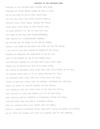
|
2012 jun 26
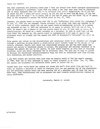
|
2012 feb 11

|
More... |
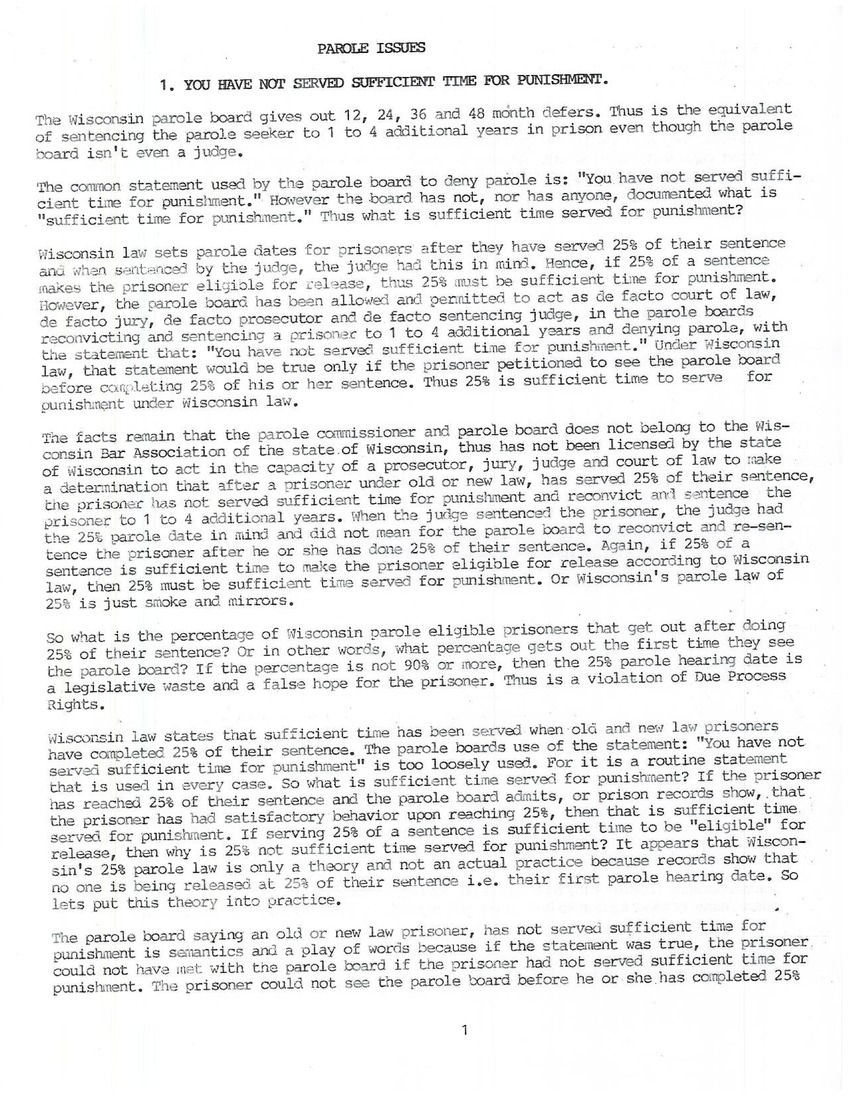
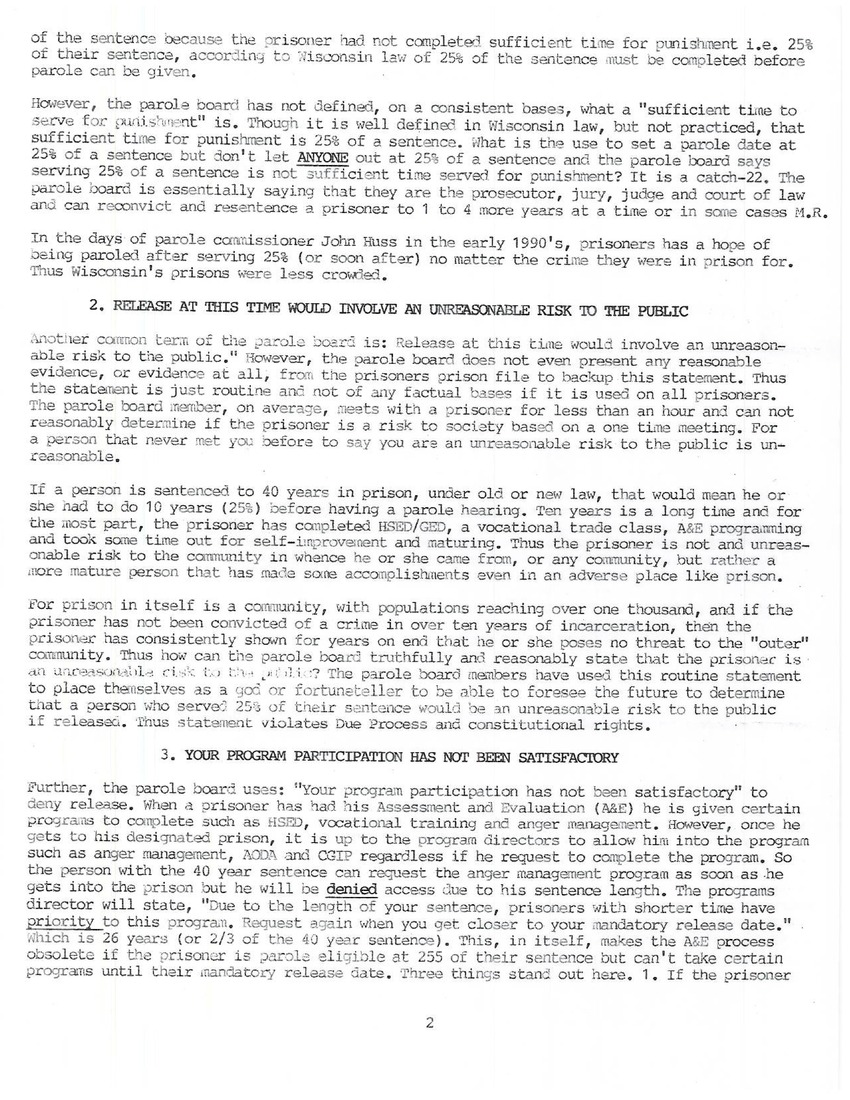
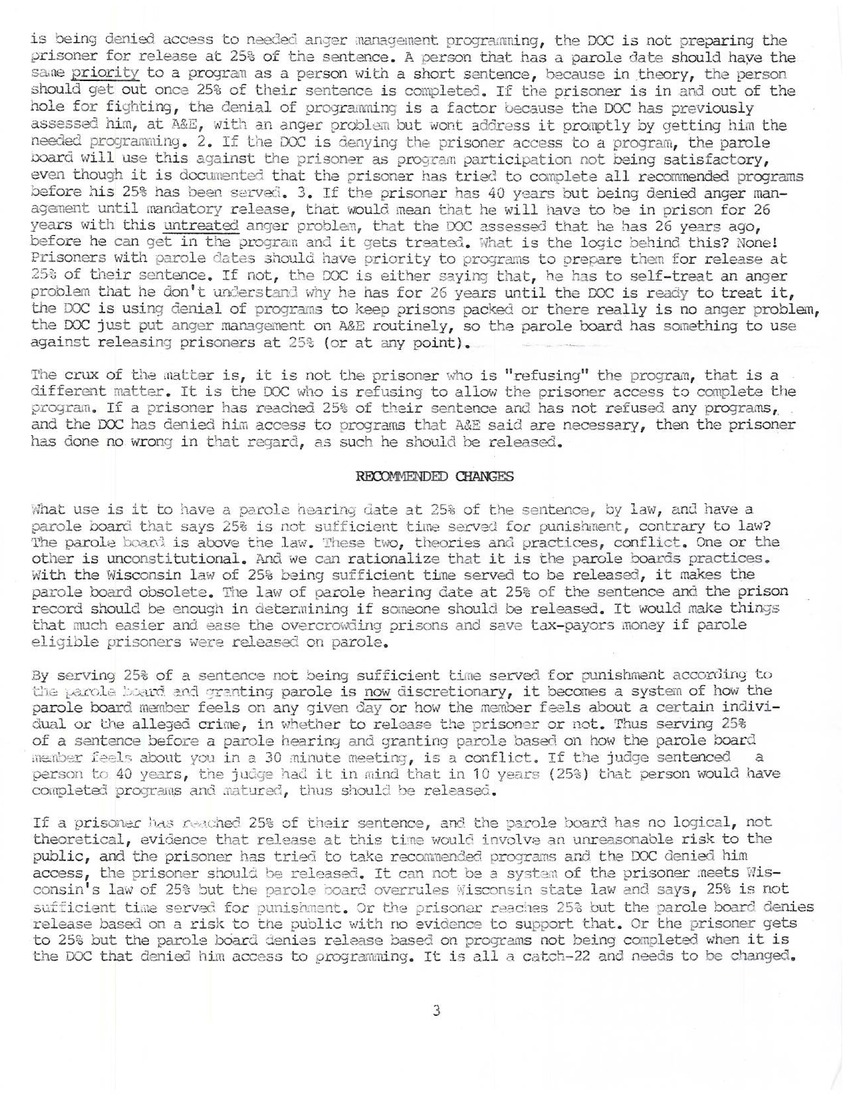
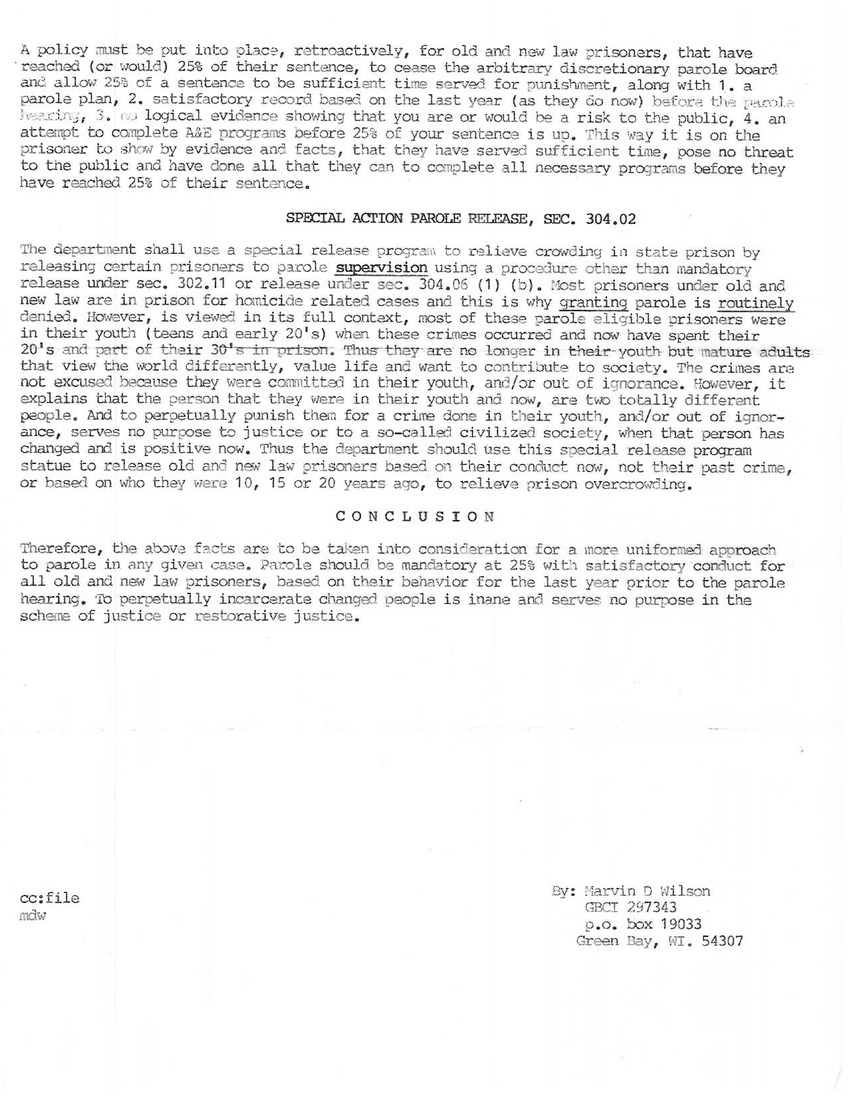

Replies